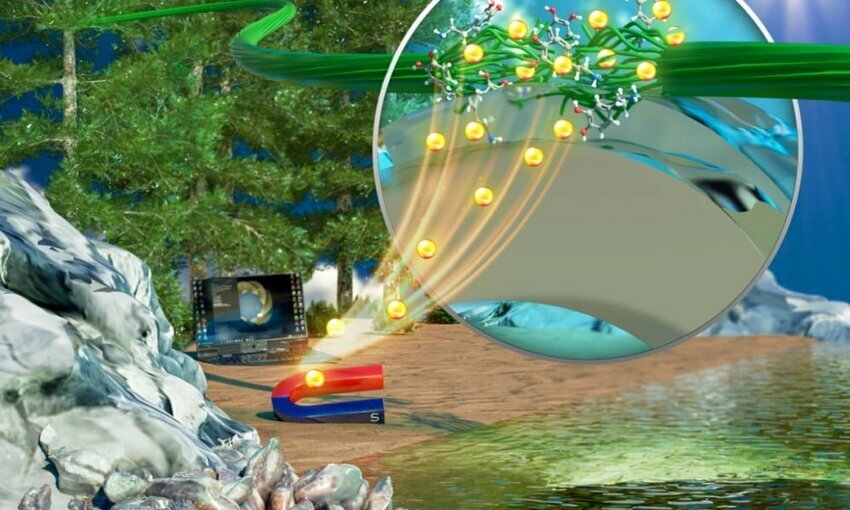 (Credit: Penn State)
(Credit: Penn State)Researchers from Penn State have discovered a way to mimic the natural glue found in mussels in order to recover rare earth elements (REE) without using large amounts of energy.
This eco-friendly solution includes what the researchers call mussel-inspired nanocellulose coating (MINC) that uses its sticky properties to extract rare elements from secondary sources such as wastewater. This process serves as a substitute for extractive practices currently used to acquire these elements, which are crucial in the creation of efficient batteries and wind turbines.
MINC is particularly useful in extracting neodymium, which is considered a critical material by the DOE because of supply shortages and its importance in technologies such as EV batteries. The current process for extracting the element from secondary sources is both inefficient and energy intensive, so this technology provides a necessary alternative.
“The MINC approach offers a sustainable and eco-friendly alternative to conventional extraction methods, minimizing the environmental footprint and contributing to the long-term availability of critical elements,” said lead author Amir Sheikhi, assistant professor of chemical engineering and of biomedical engineering at PSU. “The limited global supply of neodymium and the environmental impact of current extraction methods necessitate the development of eco-friendly and sustainable approaches for REE recovery.”
Many environmentally-conscious solutions such as this one copy systems already present in nature, using "biomimicry." For instance, engineers have learned from the structure of maple leaves and kingfisher birds how to retrofit wind turbines for increased power generation.
In the present study, researchers broke down the composition of the natural glue used by mussels to stick to underwater surfaces in order to develop the MINC coating, which basically acts as a magnet for neodymium. The technology is also able to avoid recovering undesired elements such as sodium and calcium, which would use more time and energy to filter out.
"The challenge in extracting neodymium lies in achieving efficient and selective removal of it at low concentrations,” said Sheikhi. “The MINC presented in this study offers improved selectivity and capacity for neodymium removal, overcoming limitations of previous methods.”
Using mussels as a model not only helps effectively recover neodymium, it does so in a way that is considerably less damaging to the environment containing the element.